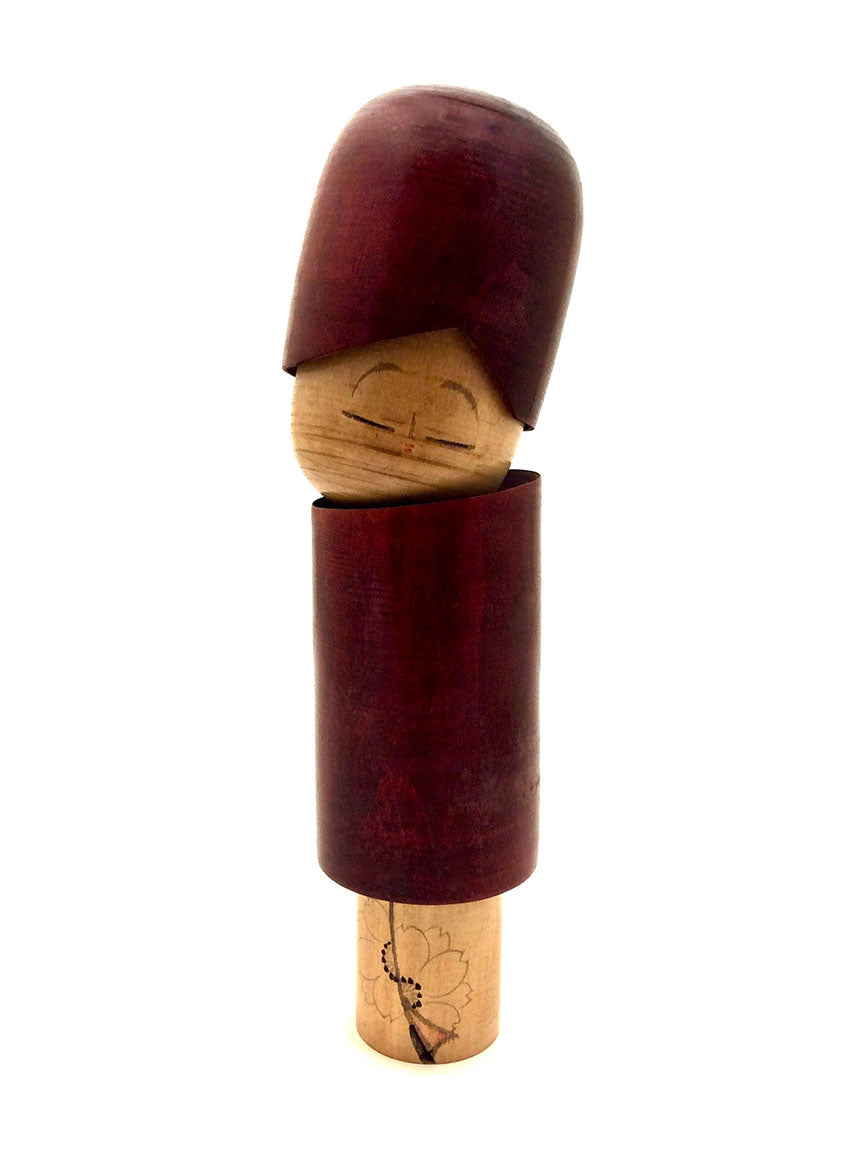

Artisan | Woodworker: Yajima, Suiho | 1915-
Biographical History:
Yajima-san was an art teacher and began creating Sosaku Kokeshi in the 1950s, winning numerous awards including the Prime Minister’s Award in 1958. There is little biographical data on Kato-san, but as collectors, we felt it was most important to represent all Sosaku Kokeshi artists, whether or not each artist has a written account of his/her life. We show the diversity of cultural values and the creative work produced by a multitude of artists.
In researching old writings through articles and books that remain, it is evident that the Kokeshi Craftsperson not only created beautiful forms as toys, but also kept alive cultural values, customs, and fashion through the extensive representations of Kokeshi dolls. The beauty is in the doll and not the signatures, for most masters never signed their dolls. Later they named the dolls, but only when Westerners insisted on signatures because they did not know the artists, so the carvers began to sign their works, for the carvers wanted to promote sales to make a living, during the seasons that did not provide an environment to continue their otherwise daily work.
Collector's note – descriptive qualities, standard characteristics & ornamentation styles:
The majority of Yajima-san’s figures are tall, tapered, and elongated elegant bodies simply painted and decorated with carved motifs, typically plum blossoms. The diversity in the type of individualized treatment gives a desired and unusual dimension and texture. The obi on his dolls are always unique to that figure and beautifully balances his dolls which is typically understated. His doll heads incorporate elongated necks taking on different positions, reminding us of the gentle spirit of women throughout the country, as well as affording the doll's personality. Other doll heads are directly attached to the body with expressive positioning. Most of the motifs incorporated into the figure represent seasonal flowers, both real and abstract in execution in rendition. It is not unusual to see Yajima combine woods to give excitement to a doll.




